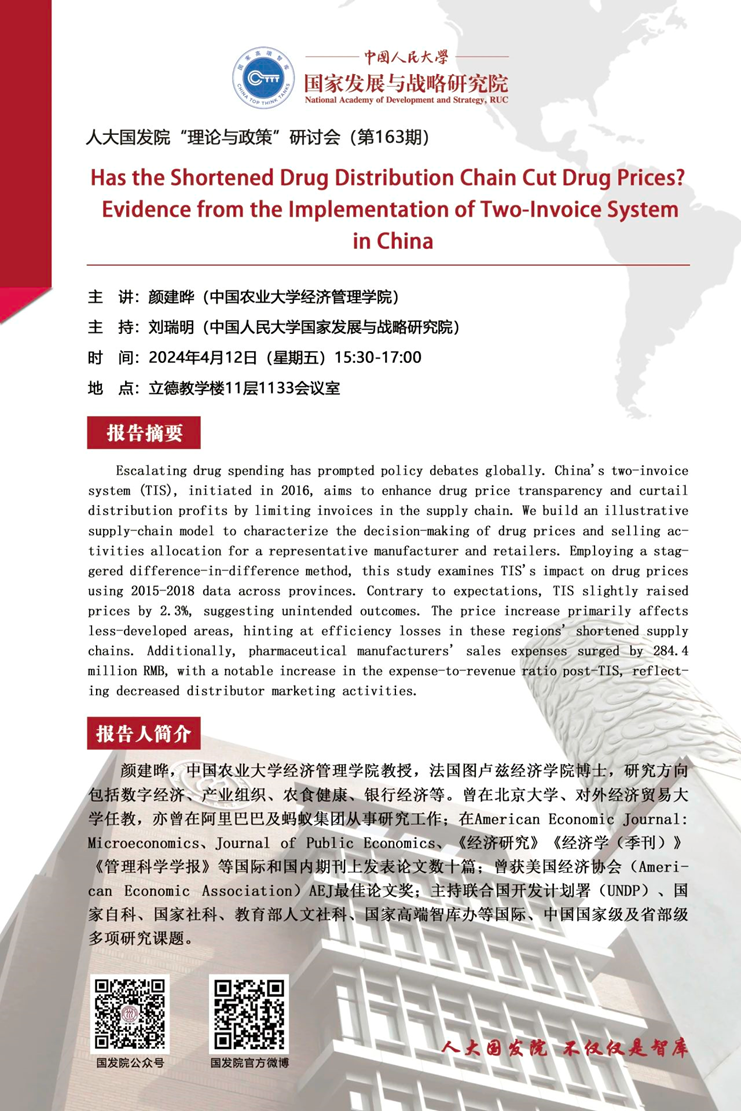 Notifications
Notifications
09
AprNational Academy of Development and Strategy (NADS), RUC
Theory and Policy Seminar, Series 163
Has the Shortened Drug Distribution Chain Cut Drug Prices? Evidence from the Implementation of Two-Invoice System in China
Reported by: Yan Jianye (Professor of Economics, College of Economics and Management, China Agricultural University)
Moderator: Liu Ruiming (Professor of National Academy of Development and Strategy, RUC)
Time: April 12, 2024 (Friday) 15:30-17:00
Venue: Room 1133, 11th floor, Lide Building
Abstract:
Escalating drug spending has prompted policy debates globally. China's two-invoice system (TIS), initiated in 2016, aims to enhance drug price transparency and curtail distribution profits by limiting invoices in the supply chain. We build an illustrative supply-chain model to characterize the decision-making of drug prices and selling activities allocation for a representative manufacturer and retailers. Employing a staggered difference-in-difference method, this study examines TIS's impact on drug prices using 2015-2018 data across provinces. Contrary to expectations, TIS slightly raised prices by 2.3%, suggesting unintended outcomes. The price increase primarily affects less-developed areas, hinting at efficiency losses in these regions' shortened supply chains. Additionally, pharmaceutical manufacturers' sales expenses surged by 284.4 million RMB, with a notable increase in the expense-to-revenue ratio post-TIS, reflecting decreased distributor marketing activities.
